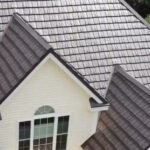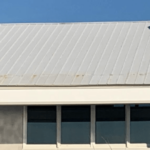Roof-Overs
FACT
Many metal roofs are installed over existing asphalt/fiberglass shingle roofs and, in some cases, over wood shingles as well.
ANALYSIS
Metal’s low weight makes it ideal for roofing over existing roofs. Aluminum roofing weighs about 50 pounds per square (100 square feet) while copper and steel, depending upon their gauge, weigh 95140 pounds per square. In some cases, the old shingles might have lost that much weight in granules that have washed away and oils that have evaporated. Leaving the old shingles in place increases the building’s thermal mass and energy efficiency. It also saves having to burden landfills with old roofing materials and it reduces the expense and mess endured by property owners. While roof-overs with metal make a lot of sense, most building codes were drafted with standard shingles in mind so they do not allow roofing over more than one layer of old shingles.
SOLUTION
If the current roof makes a good substrate and it is possible to securely fasten the new roof, installing over the old roof makes a lot of sense. If, however, the current roof shows signs of excess weight (sagging decking, buckling trusses) or if it has leaks and possible rotted wood, those issues must be addressed. In some cases, once a building inspector understands the weight factor and benefits of metal roofing, they will allow installation over multiple layers of old shingles. Metal roof panels with deeply formed texturing are more forgiving for installation over curled old shingles. They are often even installed over wood shingles up to 3/4” butt thickness. This should not be done with products that sit on or consistently close to the roof deck as they will “mimic” the condition of the old roof. Whenever metal is installed over an existing roof, a secure underlayment should be in place over the old shingles.
Refer to Technical Bulletin #14 on going over asbestos shingles or Technical Bulletin #17 regarding underlayments if necessary.




